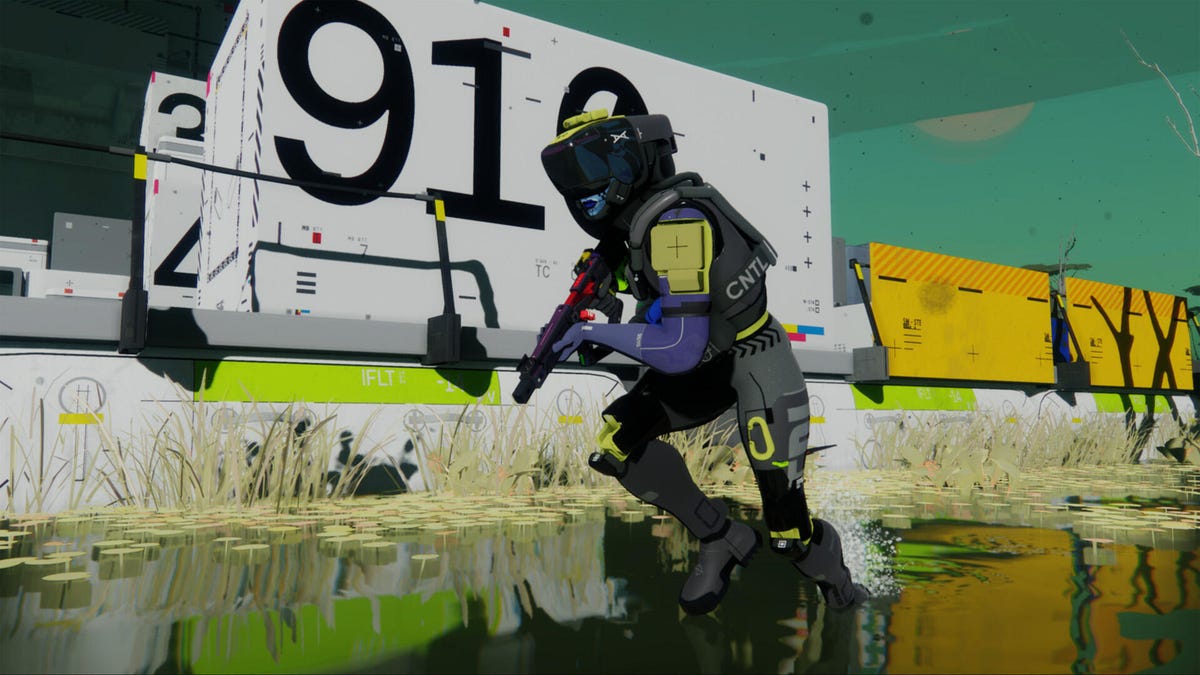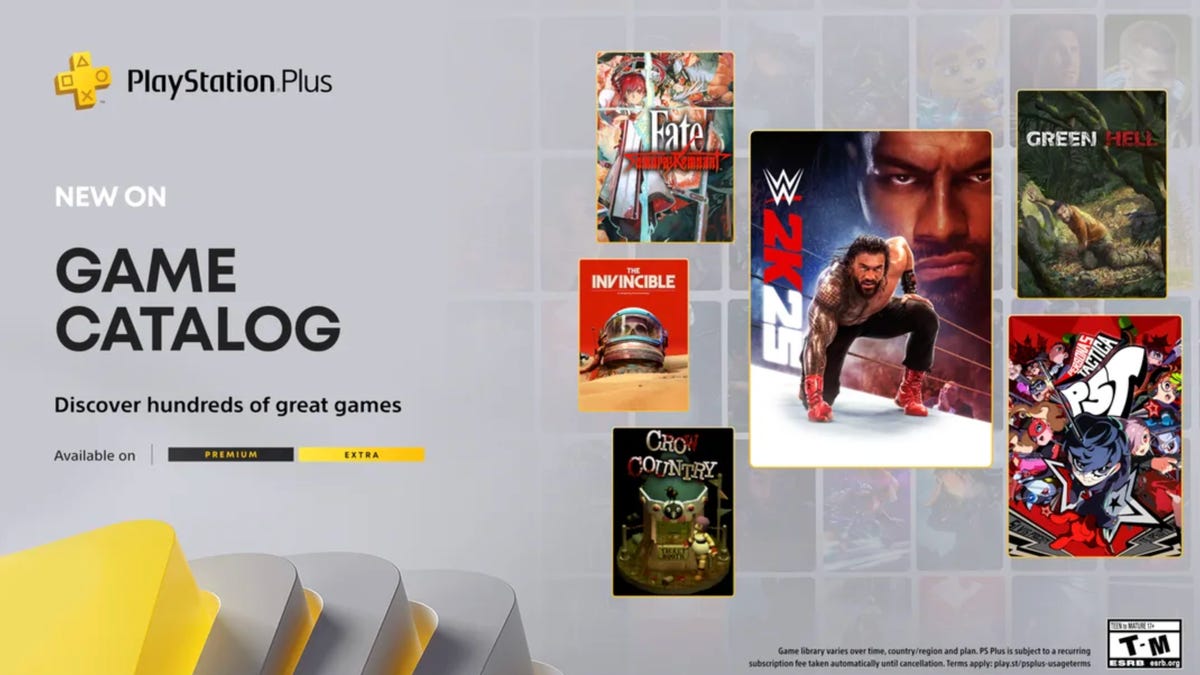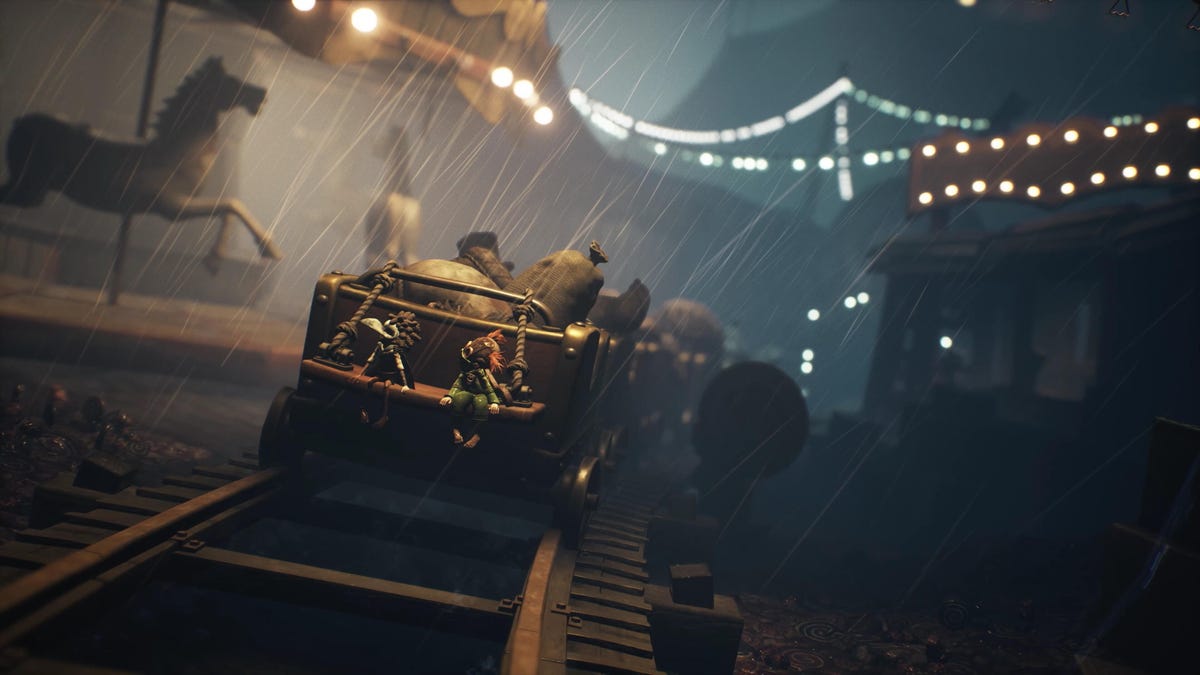Technologies
How to Join Bungie’s Marathon Alpha Test Ahead of Its September Launch
Discover the fortune and secrets of Tau Ceti IV in new gameplay footage.

Marathon, the long-dormant sci-fi shooter from Bungie, makes its return in September. For players who want to try out the new game before it comes out, there will be a closed alpha test starting later this month.
A trilogy of games released on the Mac back in the ’90s, Marathon put Bungie on the map before it released Halo on the original Xbox. This latest iteration of Marathon is a complete overhaul of the original formula, going from an old-school 3D first-person shooter like Doom to a team-based extraction shooter. Players take the role of runners who drop onto the planet of Tau Ceti IV to search for loot, fortune and secrets.
//RUN 🏃
Infilling on September 23, 2025.#MarathonReveal pic.twitter.com/2SXpzPxkA0— Marathon (@MarathonTheGame) April 12, 2025
Here’s what you need to know about Marathon.
When does Marathon come out?
Marathon will be released on PC, PS5 and Xbox Series consoles on Sept. 23.
How much will Marathon cost?
Bungie hasn’t yet provided a price as of the game’s reveal on Saturday. The developer did say on its Marathon X account that the game will not be a «full-priced title,» which should refer to the standard $70 price tag on new games. There is speculation that Marathon could be priced from $40 to $50, although at that price, there will likely be a wealth of microtransactions.
When does the Marathon closed alpha test start?
The closed alpha test begins on April 23 and runs through May 4.
How can I join the Marathon closed alpha test?
Those interested in joining the closed alpha test can sign up at the Marathon Discord channel. Once you’re in the channel, follow these steps:
- Go to the «alpha_access» channel (a link to that channel can be found in the «marathon-news» channel)
- Once in «alpha_access,» type in «/alpha»
- You’ll receive a private message with instructions and a unique link to sign up for the test
- If you’re picked, you will receive an email from marathonthegame@info.bungie.net sometime before the alpha test starts
What is this new Marathon?
Marathon has players explore the lost human colony on Tau Ceti IV, either as a team or solo. They’ll have to explore zones occupied by rival players, computer-controlled forces and other threats on the planet. Players choose from different runner classes, such as the stealth Void, which can use active camo.
The game is an extraction shooter, the latest craze in gaming genres. Extraction shooters differ from looter shooters such as Borderlands and The Division, because you need to escape the area (hence extraction) in order to keep all the loot you’ve gathered. Die and all those goodies are up for grabs for other players. The more loot you return with, the better the chances of survival next time.
How does the new Marathon game connect to the older games?
In the original Marathon games, Tau Ceti IV was the home to a human colony of 30,000 people. It was ultimately destroyed by an alien race called the Pfhor that was working with an AI called Durandal.
At the end of the gameplay reveal on Saturday, Bungie released a cinematic video providing some insight about the Runners exploring Tau Ceti IV. There are some questions about what really happened to the colony, and the details about this will ultimately be revealed as players explore the world.
Technologies
Elon Musk Says Starlink Could Replace Your Cellphone Carrier
Technologies
WWE 2K25 Jumps From the Top Rope Onto PlayStation Plus in September
Subscribers will also be able to play a turn-based strategy Persona game.

«The American Nightmare» Cody Rhodes, son of one of the greatest pro wrestlers of all time, «The American Dream» Dusty Rhodes, is the current undisputed WWE champion. And PlayStation Plus subscribers can bring Rhodes down a peg or help establish a new wrestling dynasty with the champion beginning on Sept. 16 in WWE 2K25.
PlayStation Plus is Sony’s version of Xbox Game Pass, and it offers subscribers a large and constantly expanding library of games. There are three PlayStation Plus tiers — Essential ($10 a month), Extra ($15 a month) and Premium ($18 a month) — and each gives subscribers access to games. However, only Extra and Premium tier subscribers can access the PlayStation Plus Game Catalog.
Here are all the games PS Plus Extra and Premium subscribers can access starting on Sept. 16. You can also check out the games all PS Plus subscribers can play in September, including Psychonauts 2.
Don’t miss any of our unbiased tech content and lab-based reviews. Add CNET as a preferred Google source.
WWE 2K25
Take control of your favorite superstar from the men’s and women’s divisions in this knockdown, dragout wrestling game. Become one of over 300 wrestlers from today and years past, like Rhea Ripley and Andre the Giant. This entry in the series also introduces intergender wrestling matches, barricade diving and new brawl environments where you can get over or turn heel.
Persona 5 Tactica
Join the Phantom Thieves in this real-time strategy game set in the Persona universe. You and the group wander into a bizarre realm where people are living under tyrannical oppression, and you cross paths with a revolutionary named Erina. Now you’re in cahoots with the rebels as you try to free an oppressed people and find your way back home.
Other games on PS Plus
Those are a few of the games Sony is bringing to PlayStation Plus, and subscribers can play these games as well starting on Sept. 16.
*Premium subscribers only.
For more on PlayStation Plus, here’s what to know about the service and a rundown of PS Plus Extra and Premium games added in August. You can also check out the latest and upcoming games on Xbox Game Pass and Apple Arcade.
Technologies
Little Nightmares 3 Hands-On: a Creepy Co-Op Game Arriving Just in Time for Halloween
The sequel adds cooperative play with all the haunting hallmarks of the earlier games.

After about an hour playing Little Nightmares 3, I’d used a person’s bisected halves to solve a puzzle, gotten a high score in a carnival shooting game and escaped the murderous claws of a deranged baby. As a 2-foot-tall youth trying to survive the morbid dangers of one demented area after another with my co-player, I was terrified and delighted.
I’ve only sampled the first two Little Nightmares games, but in my brief preview of Little Nightmares 3, it felt like a refined version of the series’ premise: small protagonists endangered by a large, grim world filled with traps to evade, puzzles to solve and horrid, lethal enemies to outwit. Take the scale of the animated horror movie 9, mix it with the darkest of stop-motion director Henry Selick’s maudlin settings and let players enjoy the haunting ride, room by perilous room.
This time, players aren’t alone. In Little Nightmares 3, developed by Supermassive Games, two players (or one and an AI companion) choose between characters Low (a bird-masked boy with a bow) and Alone (a girl with a jumpsuit and a wrench), who rely on each other and get out of rooms using their unique tools or just good ol’ fashioned teamwork. Sometimes this means pushing a box for the other to jump on, but other obstacles require rather complex puzzle-solving.
In the game, Low and Alone seek to escape the bleak Nowhere and its roulette of dystopian lands. My preview was limited to one of these areas — Carnevale, a demented circus where our small characters had to sneak under the feet of grotesque, ambling workers (or their corpses, tied up or swinging for the sport of their fellows). When we thought we were safe, possessed puppets sprinted after us until we could team up to knock their wooden heads off and crush them. Being noticed by anyone meant our demise, requiring frantic cooperation amid the anxious stakes of rather gruesome deaths.
It’s this tension and the dour setting that sets Little Nightmares 3 apart from other co-op games like the more excitable and dynamic Split Fiction released earlier this year, a rollercoaster flipbook of game genres that made for a breathless if not terribly coherent experience. In contrast, the section of Little Nightmares 3 I played unfolded like a series of grim vignettes that rely on its pleasingly goth trappings as much as working together with your friend (or computer teammate) to progress.
Surviving your little nightmares
While I got only an hour with the game, Little Nightmares 3 seems to iterate on rather than innovate away from its predecessors: Expect more of the same in new, grotesque settings, just with the welcome addition of tightly designed teamwork dynamics. For fans of the series, this is likely a good thing. There’s not much else like Little Nightmares.
The Carnevale stage I played through opened up with rain pelting red-and-white circus tent tops, which I as the masked Low (and someone from Bandai Namco who kindly played as the jumpsuit-wearing Alone) skittered between. Lumbering above us were brutish factory workers seeking escape at the funfair, which very quickly turned sinister as we very shortly saw some hanging tied-up as others took turns beating them like a piñata. We entered one room to find one worker in connected boxes as the subject of a magician’s saw-in-half trick…which was no trick, as we had to separate the halves to climb out of a window. I tried, and failed, to ignore the viscera slopping out of the boxes.
While we hid from the human-size enemies, we had to fight the wooden puppets. Like Geppeto’s most horrid creations, they ambushed us in several rooms, requiring me to knock their heads off with Low’s bow and run away from their decapitated bodies while my teammate rushed forward to crush their heads with Alone’s wrench.
But most of the rooms are about solving puzzles, which could be as simple as moving a box for my teammate to jump up and pull a switch or figure out how a radio plays into a complex solution. While these quiet moments are a nice break from the tense combat or pursuit, they also give time to appreciate the macabre backgrounds: I ran past one room with a circle of empty tall chairs only to come back a few seconds later to find them filled with puppets, unmoving but watching.
And then there are the really, really tense moments. We moved from the carnival to the adjoining candy factory (apparently where all those brutes work) and up to the offices where the boss works, to find him asleep with the TV droning on in the darkness…and his frankly hideous baby nestled next to him. Naturally, we had to make noise, cranking open a grate, awakening the terrifying spawn who ran after us. After many, many failed escapes, my teammate and I discovered we had to scramble for a hiding place after making it past the grate.
This was perhaps the most frustrating part of the preview as we panicked looking for a solution to our deadly woes (as opposed to the slow, methodical gameplay earlier) — but that’s part of the tension, especially when adding a teammate to the mix. Ultimately, it was a hard-won lesson in patience. In the next room, a kitchen, the nightmarish baby banged a bowl on the table until the father walked over to a corpse (presumably his worker) and cut out some meat for his ghoulish child to eat.
In my short time with it, Little Nightmares 3 seems like a cooperative spooky storybook for players and their friends (but not couch buddies, sadly — it’s online co-op only) to experience. How much it lives up to previous games in the series, especially as developer Supermassive Games takes more of the reins from the franchise’s original creators Tarsier Games, is anyone’s guess. (Tarsier’s similar spiritual sequel to Little Nightmares, Reanimal, is coming in 2026.)
But as the air turns crisp and Halloween beckons, it’s the best time of the year for a creepy co-op game like Little Nightmares 3 to land.
Little Nightmares 3 comes out Oct.10, 2025, for PC, PS4, PS5, Xbox One, Xbox Series X/S, Nintendo Switch and Nintendo Switch 2.
-

 Technologies3 года ago
Technologies3 года agoTech Companies Need to Be Held Accountable for Security, Experts Say
-

 Technologies3 года ago
Technologies3 года agoBest Handheld Game Console in 2023
-

 Technologies3 года ago
Technologies3 года agoTighten Up Your VR Game With the Best Head Straps for Quest 2
-

 Technologies4 года ago
Technologies4 года agoVerum, Wickr and Threema: next generation secured messengers
-

 Technologies4 года ago
Technologies4 года agoGoogle to require vaccinations as Silicon Valley rethinks return-to-office policies
-

 Technologies4 года ago
Technologies4 года agoBlack Friday 2021: The best deals on TVs, headphones, kitchenware, and more
-

 Technologies4 года ago
Technologies4 года agoOlivia Harlan Dekker for Verum Messenger
-

 Technologies4 года ago
Technologies4 года agoiPhone 13 event: How to watch Apple’s big announcement tomorrow
